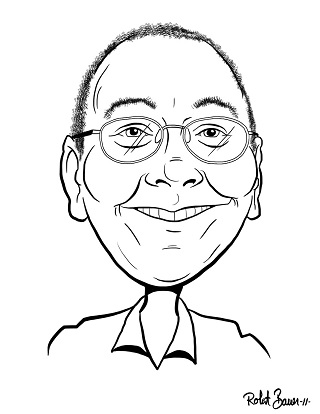Does your career feel like driving on a road to a dead-end? It doesn’t have to – whether you work in the private or government sectors. The three human traits that can help you make a difference in your career development journey are:
- Future Vision;
- Deliberate Planning; and
- Focused Effort.

To put these traits in perspective, I share the experience of observing and supporting the unique and inspiring trail that Mike Lynch forged during his service as a transportation engineer and team leader at the Maryland State Highway Administration.
I worked with him professionally from 2000 to 2007 and my observations and conclusions on this topic developed as a result of that association with him. He joined the Highway Hydraulics Division as a design engineer in 1994 and led the organization-wide Integrated Design System (IDS) initiative he conceived to promote process consistency and efficiency and collaboration across the disciplines of design, construction, operations and maintenance. Mike is no longer a Maryland SHA employee.
To this day I cherish the environment of purposeful action that permeated his team every day throughout the course of my professional involvement with him. The legacy he left behind at SHA on making a career move to the private sector lives on at the time of this writing in the form of SHA V8 CAD Standards, of SHA's implementation of Bentley ProjectWise, and of numerous other process efficiency applications he developed the future vision for.
In this blog, we explore the traits Mike used. These traits can help you too make a difference in your career.
Future Vision
Identify a value that will make the organization a better place. The clearer and more powerful the future vision represented by the identified value, the stronger the resolve to see it through.
When working on design projects, Mike recognized inefficiencies that resulted from widespread partitioning of project design data by Divisions and Offices and the lack of attention to improving CAD standards. He knew significant benefits could accrue if such practices were challenged.
The value Mike identified was efficiency. The vision was an organization-wide initiative that promoted collaboration, productivity, and the integration of diverse systems through the adoption and development of appropriate software systems.
Deliberate Planning
Identify the necessary steps to make the vision a reality. This requires an awareness of how the vision is likely to unfold and the ability to develop a list of sequenced actions and necessary resources in support of that vision.
In their planning activities, many employees and managers use paper-based or software tools. Mike used Novell’s GroupWise® Tasks daily to help him develop and refine steps and to track them to completion.
For example, Mike created these tasks in GroupWise®, his email communication software at the time:
- Set up monthly and quarterly committee meetings;
- Develop strategic plan;
- Pilot and evaluate technology;
- Pursue funding, and many others. Funding and support cannot be taken for granted and must be pursued relentlessly.
Focused Effort
Pursue planned tasks, even those assigned to others, to completion. Remember, if tasks aren’t completed, the effort will suffer. Recognize that not all planned tasks may have been on target; revise those as necessary so they better serve the vision.
As Mike embarked on the journey to breathe life into IDS, he knew he was a facilitator who must rally resources that would help him strategize, provide technical assistance, and complete tasks. He formed an oversight committee along with technical subcommittees. These had wide representation from within the organization and the consultant community.
A weekly review of planned activities and daily follow-up with those assigned to work on tasks helped Mike keep the effort on target. He was honored as Employee of the Year in May 2001. As Mike often notes, “I’d be lost without GroupWise®.”
I communicated with Mike the first week in January this year to get his blessing to verify the accuracy of facts; he corrected the year in which he joined SHA (1994) as opposed to 1997 that was originally published. Allow me to continue, with this editorial responsibility out of the way. He went on to say:
"The need to identify resource needs and to pursue them, especially in a big agency where resources exist, you just need to tap them. In the case of IDS, it was finding the contract vehicles and getting the right consultants on board. To this day I am still known as a CAD and computer expert when in reality I am a novice at both at best. It was the ability to line up those resources that got me the reputation. Focus on stellar customer service is vital as well. Part of the success was responding promptly to customer concerns and needs. CTS [Editor: Consultant Contract Tracking System, a contract management software the team he managed developed], was successful because Sippy [Editor: the name of the software engineer with RAM at the time who developed the software] was at someone’s desk minutes after they called about an issue. Customer service like that was instrumental to IDS achievements."
If you found this information helpful and your employer doesn't have a formal career development program, look to your professional membership organization. Non-profit entities such as the American Society of Civil Engineers develop and make career development-related educational materials available to their members.
Ranjit Sahai is the founder of RAM Corporation, a professional services firm focused on DOT engineering and technology projects.
